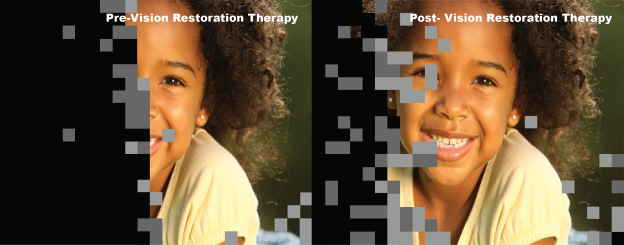Rehabilitation Of Vision Deficits
Visual field deficits after stroke or brain injury can be overlooked early on as more severe, and life-threatening, injuries sustained from the stroke or brain injury are treated. Patients should undergo a vision evaluation as soon as possible after their injury. Even if a patient does not perceive any problems with his or her vision, defects may be present, and they can have an extensive impact on the patient’s life and may affect other rehabilitation efforts.
Spontaneous Improvement And Recovery
Within three months of a stroke or brain injury, it is common for patients to experience some spontaneous improvement and occasionally full resolution of their visual field deficits. In other words, some vision difficulties will clear up by themselves. However, in many cases, spontaneous recovery is only partial and the remaining vision difficulties require therapeutic intervention.
Alternative Therapeutic Strategies
There are three main strategies for potential visual rehabilitation: Substitution, Compensation and Restoration.
NovaVision provides a portfolio of CE Marked therapy and diagnostic products focused on Compensation and Restoration. Vision Restoration Therapy (VRT) and NeuroEyeCoach are highly complementary restoration and compensation therapies, which NovaVision offers in a therapy suite providing broad benefits to patients.


